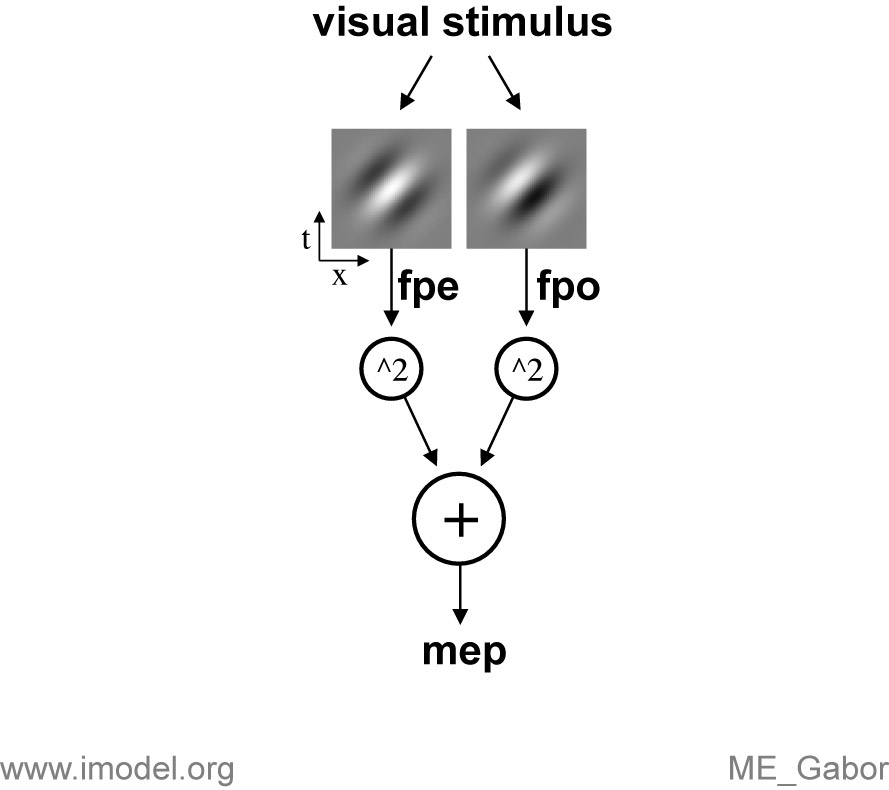DS_Gabor_One
MEO_Gabor
ME_Gabor
MEO_Gabor_Rot
ME_Gabor_Rot
RD_Exp_T
RD_2Gabor
RD_2Gabor_Rect
Variations
ME_Gabor.sHtQ
ME_Gabor.sHtH
ME_Gabor.sHt1
ME_Gabor.sHt2
ME_Gabor.s1tQ
ME_Gabor.s1tH
ME_Gabor
ME_Gabor.s1t2
ME_Gabor.s2tQ
ME_Gabor.s2tH
ME_Gabor.s2t1
ME_Gabor.s2t2
Motion Energy, Gabor Filter
This non-opponent motion energy (ME) model has linear filters that are 3-D Gabor functions (Gaussian times sinusoid). A 2-dimensional form of this model was first described by Adelson and Bergen (1985; their Fig 9). This type of ME unit has been used to model responses of direction selective (DS) cortical neurons (Heeger, 1987; Grzywacz and Yuille, 1990), although it fails to capture some basic properties of DS neurons in macaque (Bair and Movshon, 2004).
Results
References
- Adelson EH, Bergen JR (1985) Spatiotemporal energy models for the
perception of motion. J Opt Soc Am A 2:284-299.
- Bair W, Movshon JA (2004) Adaptive temporal integration of
motion in direction-selective cells in macaque visual cortex. J
Neurosci 24:7305--7323.
- Grzywacz NM, Yuille AL (1990) A model for the estimate of
local image velocity by cells in the visual cortex. Proc Roy Soc Lond
B 239:129-161.
- Heeger DJ (1987) Model for the extraction of image flow. J Opt Soc Am A 4:1455-1471.

The raw signal (mep) is then offset, scaled and half-wave rectified (although the signal is typically already non-zero unless the scaling or offset has introduced negative values), and it is used to drive a Poisson spiking mechanism. The spikes are time shifted to simulate a neurobiological latency. See the model (.moo) files for the parameters that govern these computations.